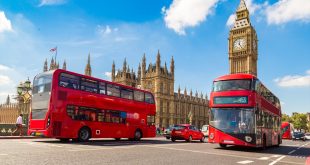Tourism is an important sector for any economy in the world, not only because it generates jobs, economic growth and unquestionable development, but also because it promotes cultural preservation, environmental protection and generates a sense of pride and attachment to what is ours.

According to the United Nations World Tourism Organization (UNWTO), the movement of tourists around the world increased by 6% in 2018 – the second best result since 2010 – and is expected to grow by 3-4% in 2019, as a result of stabilization in the price of fuel (which would make travel more affordable), greater ease of visa issuance and improved air connectivity. However, the outcome would be affected by a slowdown in the global economy, the uncertainty caused by brexit and geopolitical tensions that make travelers’ decisions a little more difficult.
Although these are external factors that affect the sector at a global level, there are internal tasks that our country can and must complete in order to better face the situation. As they say, understand the crisis as an opportunity.
Content
Tourism in figures
According to the latest detailed figures recorded by the UNWTO, with respect to the movement of tourists throughout 2017, the continent that received the most tourists was Europe, followed – albeit by far – by Asia. However, in terms of growth, it was Africa that showed the greatest dynamism, receiving 8.6% more tourists than in 2016. Similarly, there was an interesting change in the pattern of travelers, since the entry of tourists to emerging economies grew more than advanced economies.
Of the ten most visited countries by tourists, France, Spain and the U.S. occupied the first three places; however, it was Turkey and Mexico who showed greater dynamism over the previous year, with growth of 24.1% and 12%, respectively. On the other hand, the tourists who spent more during their trips were the Chinese, Americans and Germans.
When looking in more detail to South America, we see that in 2017 received 36.7 million tourists, 8.3% more than the previous year, and was the region that showed greater dynamism in the Americas (unlike the growth of 4.2% in North America and 2.9% in the Caribbean). The South American country that received the most tourists was Argentina (+1%), closely followed by Brazil (+0.6%) and Chile (14.3%). The latter has shown an interesting jump in recent years and is, along with Colombia, the only one that maintains double-digit growth figures in tourism since 2015. Peru, on the other hand, was the fourth country with more international tourists in South America.
According to the Ministry of Foreign Trade and Tourism (Mincetur), Peru received 4.4 million international tourists in 2018, 9.6% more than the previous year, and generated an inflow of foreign exchange of US$ 4,895 million, 7% more than in 2017. This higher number of tourists came from Chile and the United States which, together, represented 50% of the total. It is worth noting that eight of the ten main countries of origin of travelers in Peru are Latin American and that, in line with the growth, the number of lodging establishments in the country, by December 2018, rose to 22,157, 0.4% more than in December 2017.
According to information from Mincetur, 117 tourist sites, museums, and protected areas have been identified (and therefore, a record of visitors is kept for greater control) at the national level, with Lima, Cusco, Lambayeque, and Puno being the departments with the greatest presence of these. However, according to the number of visitors, Cusco is in the lead with 4.3 million in 2018, followed by the tourist sites of Lima (3.5 million), Ica (0.69 million), San Martin (0.68 million) and Arequipa (0.55 million). In fact, the most visited places in our country, outside the city of Lima, are the historical sanctuary and the Inca citadel of Machu Picchu (Cusco), the archaeological complex of Moray (Cusco), the National Reserve of Paracas (Ica), the Huascaran National Park (Ancash) and the thermal baths of San Mateo (San Martin).
Cusco: improvement opportunities to raise tourism awareness and loyalty
As Cusco is the main tourist destination in our country, it is interesting to note the level of satisfaction of the tourists who visit this city. According to figures from Mincetur, out of a total of 100 points, the tourist who visits Cusco has a level of satisfaction of 87.3 (82.9 for national tourists and 88.8 for foreigners). This is due to the fact that, although the citadel of Machu Picchu, the hospitality of the people and the gastronomy are its main attraction, there are some serious problems related to the traffic in the city, the lack of order and cleanliness.
Even though the adjustment in the world economic growth could slow down a little the increase of tourism at a global level this year, we must start thinking inwards. How can we improve our tourist offer to attract more visitors? Attacking citizen insecurity and informality in the tourism sector is urgent. Our diversity is a gift, but taking advantage of it so that we can generate growth and well-being in the population is a pending task.
 Global Tourism Information on tourism in the world
Global Tourism Information on tourism in the world



